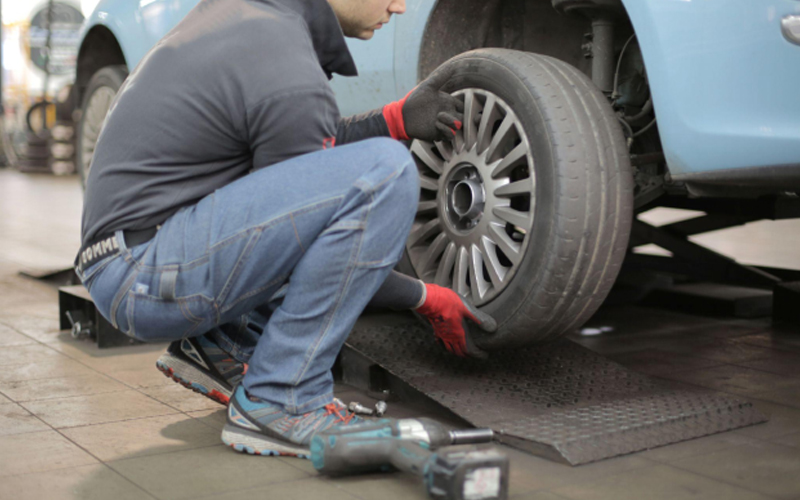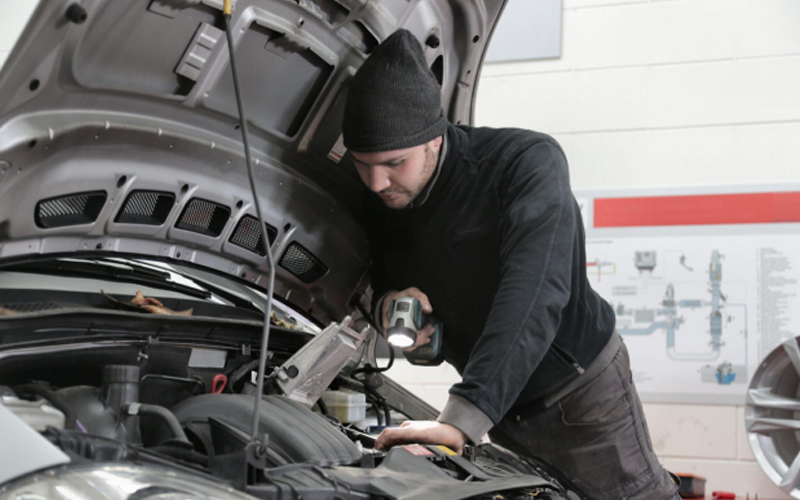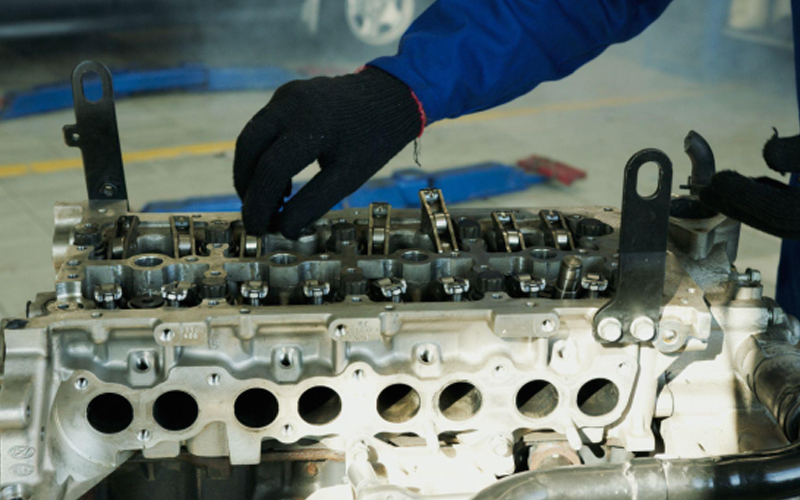Taking care of a car is essential for maintaining its performance and longevity.
One integral aspect of car care is regular maintenance, which can seem daunting to some, especially when considering the time it takes to complete these tasks.
Car maintenance is an important topic for car owners and drivers, as it plays a significant role in keeping vehicles running smoothly and safely on the road.
The time it takes for car maintenance varies depending on the type of service required and the particular vehicle in question.
Basic tasks such as oil changes and tire rotations generally take around 45 minutes to an hour, while more extensive services like brake repairs or engine tune-ups can take several hours to complete.
In this article, we will explore the duration of different car maintenance tasks and discuss how regularly driven vehicles can benefit from routine check-ups.
The goal is to provide useful insights and advice on how to keep cars in top shape while being mindful of the time investment required for these essential services.
Basic Car Maintenance Duration
Maintaining a car is essential for keeping it running smoothly and extending its lifespan.
In this section, we will discuss the duration of basic car maintenance tasks, including oil changes, tire rotations, and air filter replacements.
Oil Change
A typical oil change takes approximately 30 minutes to an hour. This may vary depending on the make and model of your vehicle, and whether you are doing it yourself or having a professional take care of it.
It is generally recommended to change your car's oil every 3 months or 3,000 miles, whichever comes first.
Tire Rotation
Tire rotations usually take around 15 to 45 minutes, depending on the vehicle and the service provider. Regular tire rotations are important for even wear and prolonging the life of your tires.
It is recommended to rotate your tires every 5,000 to 7,500 miles, or as advised by your vehicle's manufacturer.
Air Filter Replacement
Replacing an air filter is a quick task that takes about 15 to 30 minutes. Air filters help to keep dust, debris, and other contaminants out of your engine and should be replaced every 15,000 to 30,000 miles, or according to your vehicle manufacturer's guidelines.
Regularly changing the air filter can improve fuel efficiency and overall engine performance.
By keeping up with these basic car maintenance tasks, you can ensure the smooth running and longevity of your vehicle.
Remember to always consult your owner's manual for specific maintenance recommendations tailored to your car's make and model.
Advanced Car Maintenance Timeframes
Brake Pad Replacement
Brake pad replacement generally takes about 1 to 2 hours for most vehicles. However, this can vary depending on the make, model, and year of the car, as well as whether you are replacing front or rear brake pads.
Professional mechanics can often complete the task more quickly, but if you are performing the work on your own, it might take longer.
Transmission Fluid Change
A transmission fluid change can typically be completed within 45 minutes to an hour.
However, this timeframe may be extended if there are any complications or if the vehicle's transmission has a complex design.

It's essential to keep up with transmission fluid changes, as they help to maintain proper functioning and improve the overall lifespan of the vehicle's transmission system.
Coolant Flush
Coolant flushes help to prevent corrosion and overheating within the engine. A standard coolant flush usually takes about 1 to 1.5 hours to complete, depending on the vehicle and the specific procedure being used.
Some vehicles might require additional time due to their design or specific features, but a coolant flush should not take much more than 2 hours in most cases.
Timing Belt Replacement
Replacing a timing belt is a more involved process, and the amount of time it takes can vary significantly depending on the vehicle.
On average, it takes 2 to 4 hours to replace a timing belt, but it can range anywhere from 1 to 6 hours.
Factors affecting this timeframe include the location of the timing belt within the engine and whether additional components, such as water pumps or tensioners, need replacement during the process.
Factors Affecting Car Maintenance Time
Car maintenance time can vary greatly depending on a number of factors.
In this section, we will discuss three key factors that can influence the duration of car maintenance: Experience Level, Car Model, and Availability of Parts.
Experience Level
The experience level of the mechanic working on the car plays a significant role in car maintenance time.
A well-trained and experienced mechanic will likely be able to complete the maintenance tasks more efficiently than a novice.


This is because experienced mechanics have developed skills and techniques over time that enable them to quickly identify and address problems in a timely manner.
Additionally, they may also work more efficiently as they are familiar with the unique intricacies of different car models.
Car Model
The make and model of the car being serviced can also greatly impact the maintenance time required.
Some cars are designed with ease of maintenance in mind, allowing for quicker, more straightforward tasks to be performed.
On the other hand, certain luxury or high-performance vehicles may have more complex systems which could require more time for maintenance and repair.
It is worth noting that familiarity with a specific car model could also shorten the maintenance time as the mechanic will have an easier time navigating and working on the vehicle.
Availability of Parts
Another significant factor that may affect the duration of car maintenance is the availability of the necessary parts.
In some cases, a mechanic may need to replace a specific part, but if the part is not readily available, it could extend the maintenance time.


This includes both the time it takes to order the part and the time it takes for the mechanic to install it once it arrives.
Using parts that are readily available or considered "universal" could help to reduce the overall time spent on maintenance.
All of these factors combined will ultimately determine the overall time needed to complete the maintenance tasks.
Choosing the Right Maintenance Schedule
Car maintenance is crucial for extending the life of your vehicle and ensuring its smooth operation.
To help you determine how long car maintenance should take, let's explore some factors to consider when choosing the right maintenance schedule.
Owner's Manual Guidelines
To get started, always refer to your owner's manual. It contains the manufacturer's recommendations for maintenance intervals, which are designed specifically for your vehicle model.
This information will cover when to change the oil, inspect belts, replace filters, and more. Make sure to follow these guidelines closely to keep your car in optimal condition.

General Recommendations
While your owner's manual is the most accurate source for maintenance schedules, some general recommendations can serve as a useful reference. For example:
●Oil changes: Typically, every 3,000 to 7,500 miles, depending on oil type and driving conditions.
●Tire rotations: Approximately every 6,000 miles or as prescribed by your vehicle's manufacturer.
●Brake inspections: At least once a year or as advised by your mechanic.
●Fluid changes (such as coolant, transmission, and brake fluid): As specified in your owner's manual.
These intervals are not set in stone and may vary based on factors such as driving habits and environmental conditions.
Consider Your Driving Circumstances
Lastly, it's essential to consider your driving circumstances when determining the appropriate car maintenance schedule. Factors that may affect maintenance intervals include:
●Frequent short trips: Short trips may cause your engine to work harder and wear faster. Consider more frequent maintenance in this situation.
●Stop-and-go traffic and city driving: Brakes and transmission may need more frequent attention due to heavy usage while navigating congested roads.
●Environmental conditions: Extreme temperatures, dusty or muddy roads, and high altitudes can all impact your vehicle's performance. Adjust your maintenance schedule accordingly to address these challenges.
By carefully evaluating your car's owner's manual, following general recommendations, and considering your driving circumstances, you can create a maintenance schedule that helps keep your vehicle running efficiently and reliably.

Abschluss
In summary, the duration of car maintenance depends on various factors, such as the type of service required, the car's make and model, and the workload at the repair shop.
It is crucial for vehicle owners to follow the manufacturer's recommended maintenance schedule to ensure their car stays in optimal condition and avoid unnecessary breakdowns.
Regular checks and services help to maintain safety, performance, and fuel efficiency.
Keeping an open line of communication with the mechanic is also helpful to get updates and ensure any concerns are promptly addressed.
In conclusion, being proactive and prepared is essential when it comes to car maintenance.
A friendly approach to communicating with mechanics and setting realistic expectations can significantly contribute to a pleasant car maintenance experience.
Remember that timely maintenance is an investment in your vehicle's longevity, safety, and performance.
